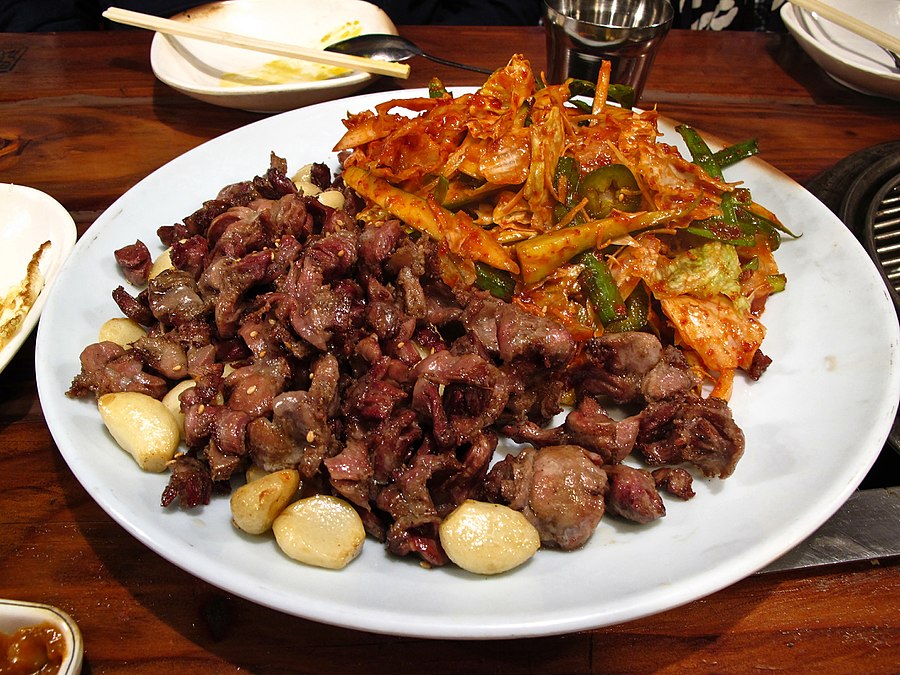Facts About Dak-ttongjip
Dak-ttongjip, meaning "chicken gizzard" in Korean, is a cherished dish in Korean cuisine, featuring stir-fried chicken gizzards seasoned with a variety of spices. It is particularly popular as an anju, a type of dish typically enjoyed alongside alcoholic beverages. You might also encounter the term dak-ttongjip-bokkeum, as it belongs to the category of stir-fried dishes known as bokkeum.
The name dak-ttongjip is derived from the Korean words dak, meaning "chicken" and ttongjip, which typically means "big intestine" or "stomach." However, some misunderstandings have led to humorous mistranslations like "chicken poo house" or "chicken asshole house" because ttong can mean "waste" and jip can mean "house."
The origins of dak-ttongjip date back to 1972. It began as a complimentary side dish offered to day laborers at Sama Tongdak, a fried chicken restaurant in Pyeonghwa Market, Daegu, South Korea. The dish quickly gained popularity, prompting the restaurant to add it to their regular menu. It soon became the market’s most sought-after item. Today, Pyeonghwa Market even boasts a "dak-ttongjip alley" making it a must-try local specialty for anyone visiting Daegu.

 North Korea
North Korea